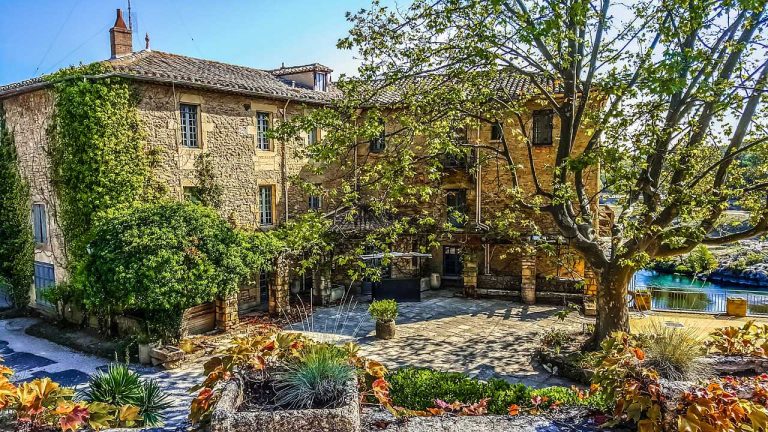Hedges add an excellent aesthetic to any garden or lawn. However, to keep them compact and dense, they need to be well-maintained and trimmed. Formal hedges require frequent trimming. Here are some guidelines on how to trim a hedge the right way:
When is the best time to trim a hedge?
For newly planted hedges, formative pruning is necessary during their first few years. The best time for formative pruning is in early spring or winter. Maintenance trimming is usually done once a year for informal hedges and twice to thrice a year for formal hedges. Depending on the locality, nesting birds should be taken into account and hedge pruning should be avoided until the nesting season (March to August) is over.
What are the techniques used for hedge trimming?
Hand-held shears are ideal for relatively small hedges, while petrol or electric hedge trimmers are more suitable for larger ones. Before starting work, ensure the equipment is well-lubricated and sharp. Personal protective equipment, such as gloves and goggles, should also be worn.
Safety should always be a top priority when using electric hedge trimmers. Check the ground for any obstacles or things that may pose risks, perform cutting actions below shoulder height, and use a stable ladder or platform. It is never advisable to use electrical hedge trimmers when the grass or equipment is damp. Also, always use an RCD (Residual Current Device) and keep the cable away from the cutting area.
Trimming formal hedges
Regular trimming ensures that formal hedges do not exceed 60 cm or 2 feet. A slight tapering on both sides of the hedge is necessary to help sunlight reach the lower parts of the hedge. This process is referred to as ‘cutting to a batter.’ Below are some tips on how to trim a formal hedge:
- To maintain symmetrical and even formal hedges, use a horizontal string tied between two canes as a guide while cutting the hedge at the top. For vertical lines, use a cane or stake in the ground.
- Shaping the hedge at the top is achieved by cutting a plywood or cardboard template to the desired shape. Place the template on the hedge and follow its line as you cut. Repeat by moving the template along the hedge.
- Ensure the hedge is level and flat at the top by making parallel shear blade cuts.
- Hedge-trimming requires the blade to be parallel to the hedge. Perform wide, sweeping cuts while moving from the bottom to the top to ensure all foliage falls away.
Trimming informal hedges
Informal hedge pruning is similar to pruning shrubs. Prune hedges by removing misplaced shoots and trim them to the size you require. Loppers or secateurs may be used where practical, especially for evergreen hedges with large leaves to prevent unsightly leaf damage.
How to cut hedges
There are three types of hedges:
- Upright plants – evergreens (box, Lonicera nitida, Escallonia) and deciduous (privet, hawthorn).
- Stocky deciduous hedges with bushy natural bases (Ribes sanguineum, Forsythia, hazel, hornbeam and beech)
- Most evergreens and conifers (Leyland cypress, Lawson cypress, bay, yew, cherry, cotoneaster, laurels, pyracantha)
Group 1 pruning
Deciduous:
- On planting, cut back the plants to 15 to 30 cm length.
- In summer, give the side branches a light trim to encourage bushing out.
- During the hedge’s second year (between February and March), cut back growth by half.
- In the second summer of the hedge, trim the side branches to taper the sides toward the top.
- In the second autumn of the hedge, cut the leading shoot, i.e., the topmost branch, to the required height.
Evergreen:
- Cut all stems to one-third of their length after planting.
- Repeat this action at the same time the following year.
- Perform maintenance trimming by trimming the tops and sides every 4 to 6 weeks once a year to maintain shape.
Group 2 pruning
- Cut back the side shoots and the leading shoot by one-third while planting.
- Repeat this again during the hedge’s second winter.
- For maintenance trimming of an established hedge, trim it in June or after it has flowered and then trim it in August. Trim the hedge so that the shape tapers toward the top.
Group 3 pruning
- Leave the leading shoot of the hedge unpruned and cut only the straggly side shoots when planting these hedges.
- During the summer, cut the side shoots and tie the leader to a cane for support as it grows.
- Use secateurs for evergreens with broad leaves such as bay and laurel.
- Trim hedges to the desired shape between one and three times each summer until the end of August. For yew hedges, you can continue clipping until September. Avoid hard pruning of conifers as they do not regrow from old wood.
Flowering and informal hedges
To encourage flowering the following year, prune informal hedges only once and at the right time. Trimming at the wrong time will remove the growth that will grow flowers the following year.
Cut plants that flower on the growth of the current season once in the spring to allow them to flower that year. Reduce the growth of the current season by half in the summer for plants that produce flowers on a year-old growth (e.g., Pittosporum).
For berry-producing shrubs like Pyracantha and Cotoneaster, trim only after the berries are gone.
